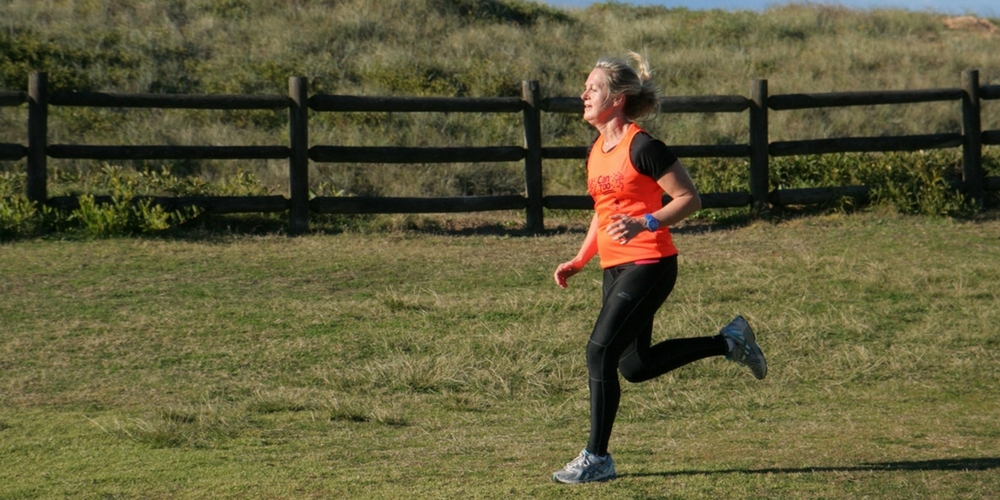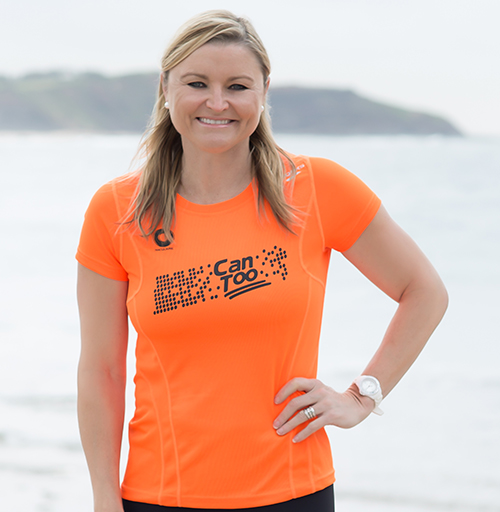
Learning how to perfect your stride length and cadence is the secret to running faster, better and more comfortably.
In short, speed = stride length x stride frequency.
This simple equation is the mathematical difference between you, me, a casual walker and the world’s best marathon runner. What it tells us is that if we increase either our stride length or our cadence then we will go faster.
Likewise, if we increase both our stride length and our cadence then we will go even faster.
What’s In It For You?
- Go faster
- Feel better
- Reduce risk of injury
How Do You Do This?
First, let’s understand the concept and the terms involved in Cadence and Stride Length, before following my practical tips and exercises to get you running faster (and feeling better doing it). You can even start using these ideas on your very next run!
Cadence
Cadence can also be referred to as ‘steps per minute’ (SPM) or stride frequency. A good healthy number to get to is 180 steps per minute when running. Unfortunately, most recreational runners hover somewhere in the 150-170 range. You know these people, you see them every time you go out running. They’re the ones who are bouncing up and down when they run, and trying to take the longest steps possible (overstriding). This causes higher impact in your joints (injury) and puts a braking force backwards through your legs (slows you down).
Stride Length
Ok, explaining stride length is easy. If you’re doing a walk your stride length is very short, if you run it increases, and if you sprint for 100m that’s realistically about as long as your own stride length gets (without further training). So to go faster, we want to eventually increase our stride length as well.
Examples To Help You Increase Your Cadence & Stride Length
Let’s say that all you do is increase your cadence. I used to run at 165 SPM (steps per minute) before I got my 1st Garmin GPS watch. Let’s also say I used to run at 5:00min/km back then. If the only thing I did differently was to lift my cadence by that extra 15 steps per minute to get to 180 then my pace would increase from 5:00min/km to 4:35min/km!
Similarly, if I usually ran a 6:00min/km at 165 SPM, keeping my stride length the same and increasing cadence to 180 would get me to 5:30min/km!
In reality, to start with, your cadence going up will mean your stride length decreases slightly. You’ll still run faster than you’re used to, and you’ll put less impact force through your body. It’s a win/win.
Confused? Think of gears on a bike. Same as with running, if you’re riding along for 10km, most of the time your cadence should be about the same (90 RPM). When you hit an incline, you change gears. Running is like that too. Get your cadence right, and stick to it. When you go up a tough hill, shorten your stride but keep that cadence up. When you hit the top of that hill, increase the stride length and away you go again.
Note: Be careful running downhill. Going downhill, it’s actually better on your body to briefly lift your cadence and use a higher cadence with similar or shorter stride to reduce the impact.
How To Improve Cadence
- Measure your cadence — run for 1 minute and count every left step. Multiply by 2. That’s your cadence. If you have a GPS watch your post run metrics should tell you cadence. Just make sure you don’t take a break and leave your watch running, or it will drop your cadence down (as it’s an average measurement).
- Get your cadence up to 180 steps per minute.
Here are some ways to measure and track cadence while running.
- Use a metronome. A truly horrible and infuriating way to learn the right cadence. If you do go this option set it to either 90bpm (1 ‘beep’ for every 2 steps run) or 45 bpm (1 ‘beep’ for every 4 steps run).
- Use your watch — not the easiest way, but it works short term. Use a stopwatch, make sure you’re getting 3 steps per second, that’s 180 SPM.
- Undoubtedly the most enjoyable and inspiring way to stay in tempo is to find music that’s at a tempo of either 90bpm or 180bpm. Make a playlist of songs you like and run to that. If you want to create your own playlist using your own music you’ve purchased then look for songs you like here. Alternatively, Spotify has pre-existing playlists you can search around the same topic.
Tip: Do not get confused if they say songs are for running certain paces — they aren’t! All you need is the right tempo (around 90BPM) to sync your cadence to, and you can run at any pace you want per song.
How To Improve Stride Length
It’s all about power, strength and form. Here’s a couple of simple ways to help strengthen the right muscles and improve form.
- Hills are your friend. Running hills of any gradient will cause you to engage more muscles in your glutes and hammies, as well as exaggerate arm movements to help power you up the hill.Try to get at least 20-30 mins per week of hills in to start with. The increased strength will help you increase your stride length when you’re running on the flat.
- Whenever you have a bit of time do some strength work on your legs. Squats, calf raises, single leg balance exercises, frog jumps are all great strengthening exercises which will help you increase your stride length.
- Be mindful of your stride length — when running try to ‘push back’ more when running. Don’t overstride in front of your hips. Focus on pulling through as your feet are under your hips, pushing back harder and completing the stride by lifting the heel towards your glute. Try this for 1-2 mins at a time on an easy run until you feel comfortable with it.
FAQs
Q: What if we increase cadence, decreased stride length and went the same speed?
A: There is a massive benefit to that too. Less impact on each step means less chance of injury.
Q: Should I rush into this, try to do too many new things at once and not let my body adapt gradually?
A: In fairness, I think that’s a fairly silly question. Any time that we change our technique, we should be sure to give our bodies time to adapt. Try working up from your current cadence to 180bpm in increasingly longer sections of your runs over 4-6 weeks.
In time it will become natural to stay at (or above) 180 spm.
Q: This ‘fast cadence’ thing feels weird, and I don’t like you.
A: OK, that’s not a question. We are creatures of habit and we like to do things our own way. Our body will adapt to the new habit if we persevere. Stick with it, and in time it’ll become natural and make you a much better runner.
You now have simple and effective ways to get started on improving your speed.
Happy running!
Get Professionally Coached Today!
We offer professionally coached training programs using qualified and experienced coaches. Can Too train all levels, from beginners to those more experienced, in structured training programs tailored to specific physical challenges such as run, ocean swim, triathlon or choral singing events.
Programs range from entry level distances such as 7km, 10km and 14km run programs and 1km ocean swims, to intermediate programs like sprint triathlons and half marathons, through to advanced programs such as marathons and trail runs.
Not sure which one is right for you? Have a look at all the Can Too programs we're holding in the upcoming year and secure your place today!









